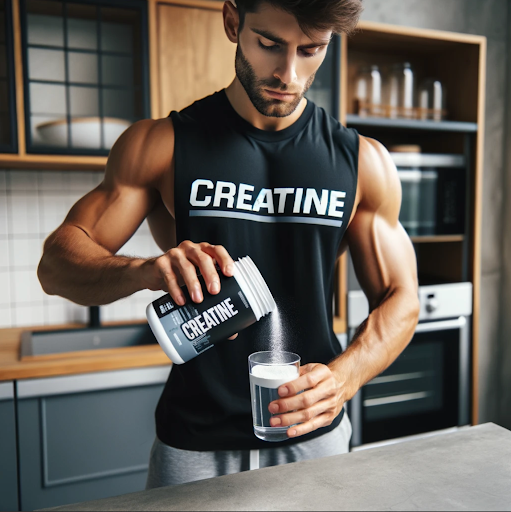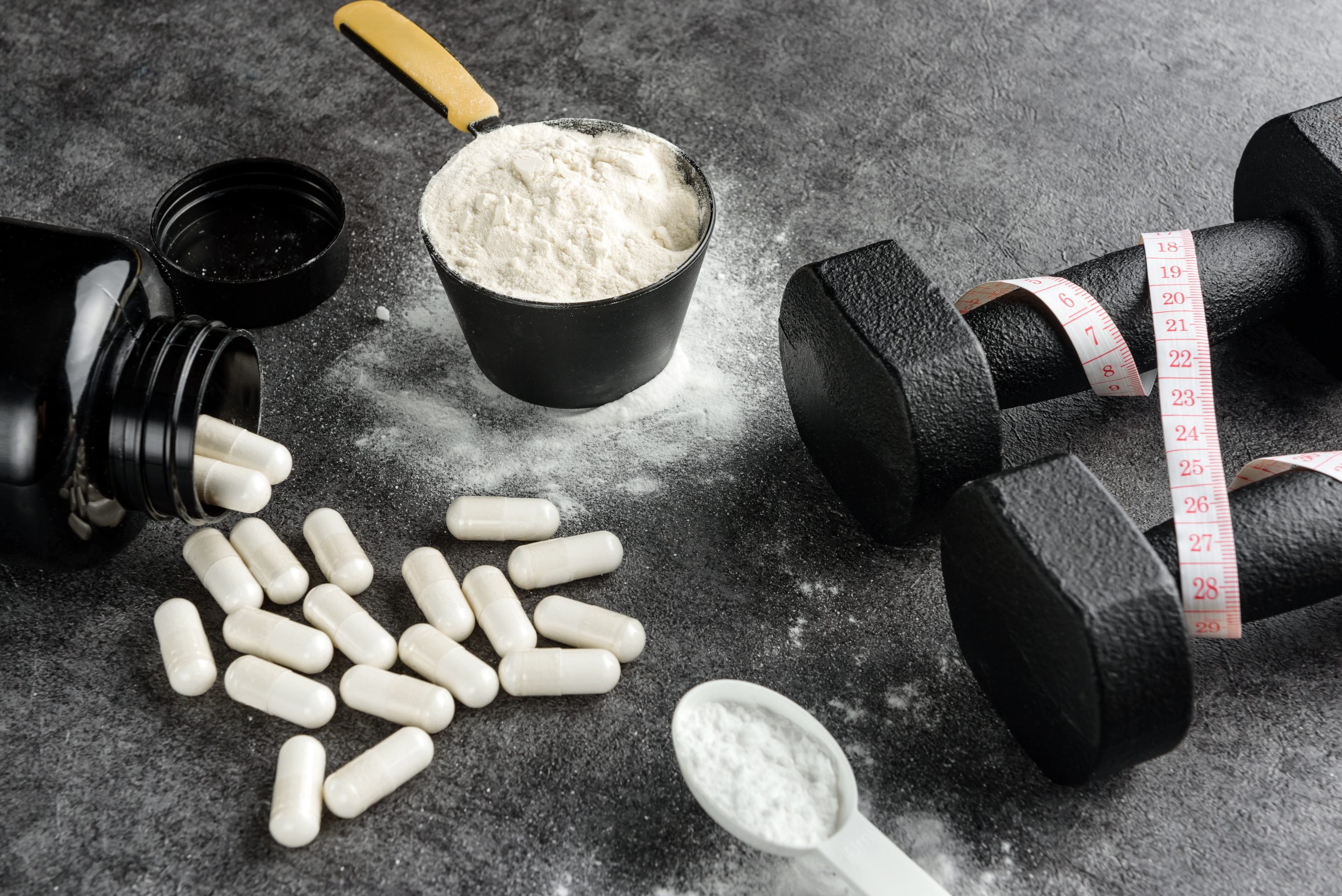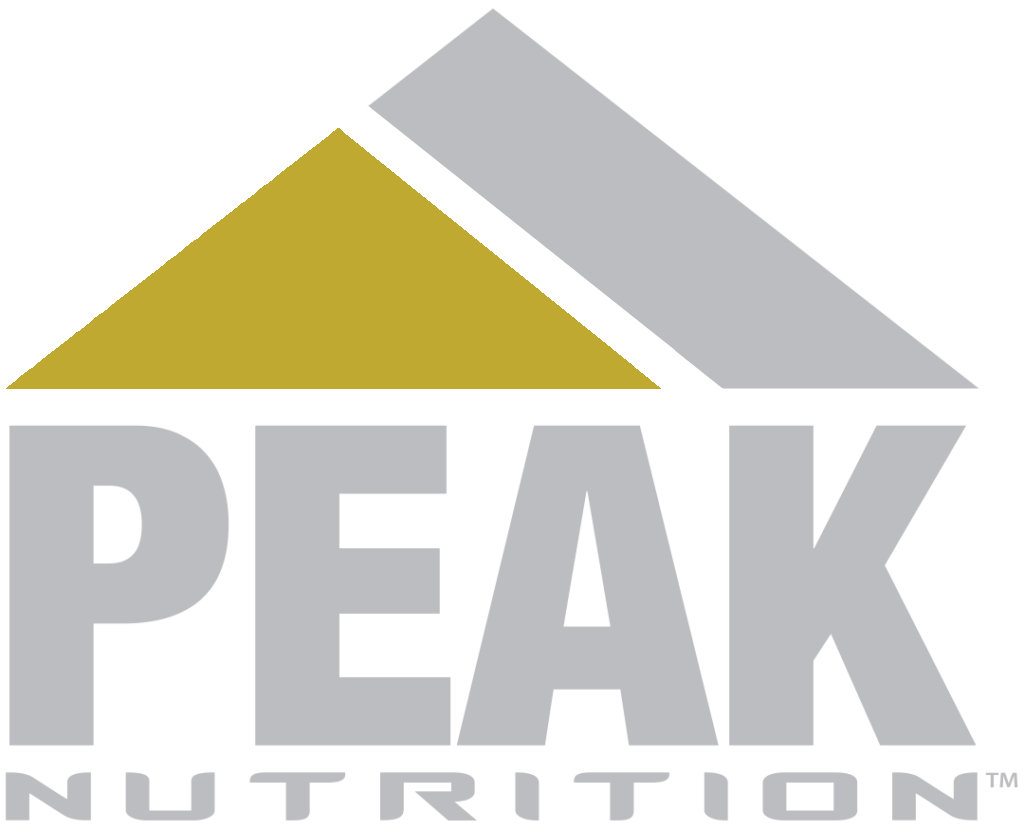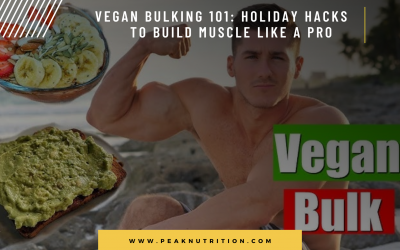Creatine supplements have become a cornerstone in the fitness and sports nutrition world, acclaimed for their ability to enhance muscle mass, boost strength, and improve overall physical performance. This comprehensive guide aims to provide an in-depth analysis of creatine, covering various aspects such as its benefits, types, proper usage, potential side effects, and considerations specific to Phoenix, Arizona, and the broader fitness community.
1. Introduction to Creatine
Creatine is a naturally occurring compound found in small amounts in certain foods and synthesized in the liver, kidneys, and pancreas from amino acids glycine, arginine, and methionine. It plays a crucial role in energy production within cells, particularly muscle cells, by regenerating adenosine triphosphate (ATP), the energy currency of cells. This function is particularly crucial during high-intensity, short-duration exercises such as weightlifting and sprinting.

2. The Science Behind Creatine
Cellular Energy Production
Creatine phosphate (CP) serves as a rapid source of ATP, which is vital for muscle contractions during intense physical activity. The body stores creatine in the muscles as phosphocreatine, which donates a phosphate group to ADP to regenerate ATP during high-intensity activities. This process allows for sustained energy output and improved performance in short, explosive movements.
Sources of Creatine
Creatine can be obtained through dietary sources such as red meat and fish, with the average diet providing about 1-2 grams per day. For those with dietary restrictions or higher physical demands, creatine supplementation is an effective way to increase muscle creatine stores.

Creatine Synthesis
The body synthesizes creatine from amino acids, with approximately 1-2 grams produced daily. This endogenous production, combined with dietary intake, maintains baseline creatine levels. Supplementation, however, significantly boosts these levels, enhancing muscle performance and recovery.
3. Benefits of Creatine
Creatine supplementation offers numerous benefits, supported by extensive scientific research:

Increased Muscle Mass and Strength
Creatine enhances muscle hypertrophy by increasing water content within muscle cells, known as cell volumization, which triggers muscle growth. It also boosts protein synthesis and muscle fiber size, leading to significant strength gains.
Enhanced Exercise Performance
By increasing ATP availability, creatine allows for longer and more intense workouts, improving performance in high-intensity, short-duration activities such as sprinting, weightlifting, and high-intensity interval training (HIIT).
Improved Recovery
Creatine reduces muscle cell damage and inflammation following strenuous exercise, accelerating recovery times and enabling more frequent and intense training sessions.
Cognitive Benefits
Emerging research indicates that creatine supplementation may support cognitive functions, particularly in older adults. Increased phosphocreatine stores in the brain enhance energy availability, reducing mental fatigue and improving memory and cognitive performance.
Bone Health
Creatine supplementation may also benefit bone health by increasing bone density and reducing the risk of osteoporosis, particularly in older adults.

4. Types of Creatine
Several forms of creatine supplements are available, each with unique properties:
Creatine Monohydrate
The most studied and proven form, creatine monohydrate is known for its high efficacy and safety. It is widely recommended for most users.

Creatine Ethyl Ester
This form is claimed to have better absorption than monohydrate, but studies have shown mixed results regarding its effectiveness.
Creatine Hydrochloride
Known for its high solubility, creatine hydrochloride may reduce the risk of gastrointestinal issues associated with creatine monohydrate.
Buffered Creatine
Buffered creatine, such as Kre-Alkalyn, is designed to reduce the breakdown of creatine in the stomach, potentially enhancing absorption and effectiveness.
Liquid Creatine
Though convenient, liquid creatine products often lack stability, leading to reduced effectiveness over time.
Creatine Nitrate
This form combines creatine with nitrate, potentially offering benefits for nitric oxide production and improved blood flow.
5. Best Creatine Powders on the Market
When selecting a creatine supplement, purity and quality are paramount. The best creatine powders are those that contain pure creatine monohydrate without any added fillers or artificial ingredients.

Recommended Brands
- Creapure: Known for its high purity and rigorous testing standards, Creapure is a popular choice among athletes.
- Optimum Nutrition Micronized Creatine: This product offers high-quality creatine monohydrate that is micronized for better solubility.
- Bulk Supplements Creatine Monohydrate: A cost-effective option that provides pure creatine monohydrate in bulk.
Local Availability
In Phoenix and Arizona, many local health and fitness stores stock a range of high-quality creatine supplements, ensuring that athletes and fitness enthusiasts have access to the best products.
6. How to Take Creatine
Proper usage of creatine involves understanding the appropriate dosage and timing to maximize its benefits.
Loading Phase
A common method to rapidly increase muscle creatine stores is through a loading phase. This involves taking 20 grams of creatine per day, divided into four 5-gram servings, for 5-7 days.
Maintenance Phase
After the loading phase, a maintenance dose of 3-5 grams per day is sufficient to keep creatine levels elevated. This phase ensures sustained benefits without the need for continued high doses.

Timing
While creatine can be taken at any time of day, consuming it with a carbohydrate or carbohydrate-protein meal can enhance absorption. Some studies suggest that taking creatine post-workout may be slightly more beneficial for muscle growth and recovery.
Hydration
Proper hydration is crucial when taking creatine, especially in hot climates like Phoenix, Arizona. Creatine increases water retention in muscles, so adequate fluid intake is essential to prevent dehydration.
7. Creatine Dosage Guidelines
Standard Dosage
The standard dosage recommendations for creatine are:
- Loading Phase: 20 grams per day (divided into four 5-gram servings) for 5-7 days.
- Maintenance Phase: 3-5 grams per day.
Adjustments Based on Body Weight
Larger individuals may require slightly higher doses to achieve the same benefits. Adjusting the dosage based on body weight can ensure optimal results.
Special Populations
- Vegetarians and Vegans: Those with low dietary creatine intake may benefit more from supplementation.
- Older Adults: Lower doses may be effective due to changes in muscle mass and metabolism.
8. Creatine for Muscle Growth
Creatine’s primary function in muscle growth is through its ability to increase the water content within muscle cells. This process, known as cell volumization, can lead to rapid gains in muscle size. Additionally, creatine enhances the synthesis of proteins involved in muscle repair and growth, further contributing to increased muscle mass.

Mechanisms of Muscle Growth
- Cell Volumization: Increased water content in muscle cells triggers anabolic signals, promoting muscle growth.
- Enhanced Protein Synthesis: Creatine boosts the production of proteins necessary for muscle repair and growth.
- Increased Training Volume: By improving performance and reducing fatigue, creatine allows for more intense and frequent training sessions.
9. Creatine and Weight Loss
While creatine is primarily known for its muscle-building properties, it can also play a role in weight loss:
Increased Muscle Mass and Metabolism
Building muscle mass through creatine supplementation can increase basal metabolic rate (BMR), leading to higher calorie expenditure at rest.
Enhanced Exercise Performance
Improved performance and recovery allow for more intense workouts, contributing to greater calorie burn and weight loss.
Fat Loss vs. Water Retention
It’s important to differentiate between temporary water weight gain and actual fat loss. Creatine may cause initial weight gain due to water retention, but this should not be mistaken for fat gain.
10. Potential Side Effects of Creatine
Creatine is well-tolerated by most people, but some may experience side effects, especially when taking high doses:
Water Retention
Creatine can cause water retention in muscles, leading to temporary weight gain. This is usually not a concern for athletes but can be misleading for those monitoring weight loss.
Digestive Issues
Some individuals may experience stomach cramps, diarrhea, or nausea, particularly during the loading phase. These side effects can often be mitigated by reducing the dose and spreading it out throughout the day.
Kidney Concerns
Despite common misconceptions, extensive research shows that creatine does not cause kidney damage in healthy individuals. However, those with pre-existing kidney issues should consult a healthcare provider before use.
Scientific Research and Articles on Creatine
For those interested in a deeper understanding of creatine, several scientific articles and blogs provide extensive information:
- Journal of the International Society of Sports Nutrition: This comprehensive review covers the safety and efficacy of creatine supplementation, addressing common misconceptions and providing detailed insights into its benefits.
- Mayo Clinic: The Mayo Clinic offers a thorough overview of creatine, including its uses, benefits, and potential side effects, making it a reliable source for understanding this supplement.
- Examine.com: Examine.com provides a detailed analysis of creatine, backed by scientific research, focusing on its effects on muscle growth, exercise performance, and overall health.
- Built with Science: This blog delves into the science behind creatine, offering practical advice on how to use it effectively and discussing its benefits for various health conditions.
- Cleveland Clinic: The Cleveland Clinic provides an evidence-based overview of creatine, discussing its mechanisms of action, benefits, and safety profile.
Conclusion
Creatine is a powerful supplement that offers a range of benefits for muscle growth, exercise performance, and overall health. By understanding how to take creatine correctly, recognizing its potential side effects, and considering individual health factors, athletes and fitness enthusiasts can maximize its benefits. With the availability of high-quality creatine supplements in Phoenix and Arizona, local athletes can incorporate this supplement into their training regimens to achieve their fitness goals.
For more information on creatine and to explore the scientific research further, visit the Journal of the International Society of Sports Nutrition, Mayo Clinic, and Examine.com.
If you found this blog helpful, make sure to follow us on Instagram @peakAZ for more tips and tricks, and come visit us at one of our store locations!




